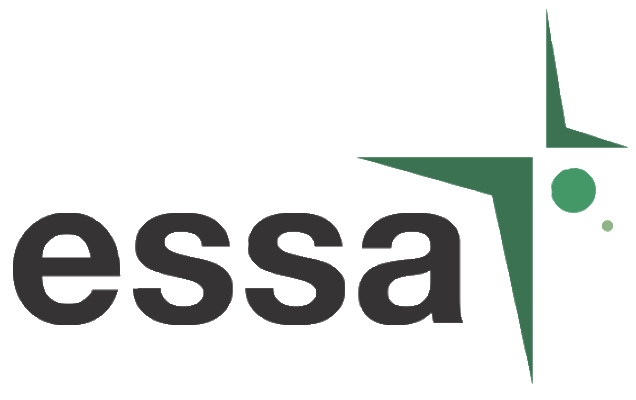For the love of shrinkflation, are your snacks disappearing faster than your ability to save money? Cindy Nhim explores these newly coined terms and the actions in place to moderate the ramifications.
[Cindy is currently pursuing a Bachelor of Commerce and Arts at Monash University. She sports great enthusiasm towards uncovering the vast landscape of concepts found within the economics field, and deciphering their correlation with society’s quality of living standards. Cindy is keen to share her knowledge with other like-minded individuals through the power of narration.]
“Shrinkflation”, Brett Jordan, https://www.flickr.com/photos/x1brett/52021456034
Shrinkflation, skimpflation, excuseflation. These may be terms that you may have come across throughout your time browsing on the internet, but what do these phrases mean and is this a topic that should even garner your interest?
Well, it should – after all, this very issue directly affects the quality of your living standards by raising the cost-of-living. From the movies you watch, the restaurants you dine at, the clothes you wear – the standard of these goods and services are all being disturbed by these exact concepts.
To start, we will cover the definitions of each expression. Then we will proceed by examining a couple proposals and resolutions that have been implemented in public, and finally undercover ways to safeguard yourself from the mounting costs and pressures.
A guide to navigating the definitions
Let’s start with shrinkflation – the act of shrinkflation is described as when corporations decrease the size or amount of a product while maintaining the price [1]. So, an example could be your favourite share box of chocolates going from 400g to 360g whilst still being $10. Then to complement this change in weight, they may also alter or revamp the packaging so that the variation in weightiness is not as noticeable upon the first glance.

Brett Jordan, https://www.flickr.com/photos/x1brett/52507948343
Next is skimpflation which is concerned with when businesses lower the quality or standard of a good or service while keeping the price unchanged [1]. Conventional trends include increasing the ratio of cheaper ingredients such as water and oils, or outsourcing a different supplier that is of lesser superiority, and once again, you will see this commonly with chocolate manufacturers. Frequently, they will modify the recipe so that there may be more oils and sugars, and they might source their dairy or cocoa from elsewhere to cut expenses, thereby affecting the intensity of the chocolate flavour and the creaminess of their product.
Finally, excuseflation is when companies simply raise prices and blame it on inflation, even when it is not the driving force behind it [1]. We saw this with Covid-19 – when lockdown restrictions were loosening, the price of many materials in the market rose drastically due to demand shocks which affected the value of final goods for shoppers. But nowadays, some companies still continue to run with this story despite Covid-19 transpiring a while ago.
As you can tell, none of these three benefit the consumer in any form, except maybe shrinkflation with regards to junk food portioning!
Are we screwed?
As for the some of the remedies out there, the Consumers’ Federation of Australia (CFA) reports that one of the Senate Select Committees has suggested 14 recommendations to help improve the ‘transparency of retail grocery prices for consumers’, however these will not be actioned until the Australian Competition and Consumer Commission’s (ACCC) supermarket investigation is completed in February 2025 [2].
This comes after the comment made by the Queensland Consumers Association (QCA) – in September 2023, they contended that Australia should follow France’s example on combating shrinkflation [3]. Their government passed legislation to intimidate mega-corporations such as Nestle, PepsiCo, and Unilever by requiring retailers to notify customers with labels of instances of when shrinkflation has occurred [4]. Following this outcome, Carrefour, a major supermarket chain in France, has earned considerable praise from media outlets and as such, the QCA proposes that the two oligopoly supermarkets that run in Australia, Woolworths and Coles, should pursue the footsteps of Carrefour.
“French retailers must display ‘shrinkflation’ information”, Fiona Holland, https://www.just-food.com/news/france-to-bring-in-shrinkflation-bill-for-retailers/?cf-view
For some more internet-savvy approaches, the subreddit r/shrinkflation is all about sharing experiences of shrinkflation in day-to-day life. Likewise, the subreddit ‘r/loblawsisoutofcontrol’ is a Canadian channel that is occupied with boycotting the establishment Loblaws who dominate the grocery and pharmacy sectors in Canada. Though there is not an equivalent for Australian media, it is a potential idea to set up a network that informs other citizens about these practices. This, in conjunction with the previous suggestions submitted by the Senate Committee, should help to alleviate cost-of-living pressures for Australians by raising general public awareness.
“ 12.6% decrease in size by weight with a price increase does not make me ‘Feel Good’ (UK)”, user u/nepourjoueraubingo, https://www.reddit.com/r/shrinkflation/comments/14e6j8r/126_decrease_in_size_by_weight_with_a_price/
Ways to protect yourself from shrinkflation
The unfortunate reality is that modern-day boycotts are rarely successful due to consequences of globalisation. However, research from Erica Chenoweth, a political scientist from Harvard University, suggests that in order to initiate worthwhile political changes, 3.5% of the population is needed to actively engage in some form of lobbying [5]. As such, you should view boycotts as another tool alongside many others if you want to promote social change – other examples include contacting the relevant authorities and officials, signing petitions, and attending protests [6].
The most repeated advice from the media is to vote with your wallet which means to purchase from businesses that you are happy to support whether that is because of their employee practices, their ethical stances, or the quality of their product. However, it is important to keep in mind that this form of boycotting mainly works on a smaller scale. Since the price elasticity of demand towards consumer staples is relatively low, only those with sufficient disposable income will be able to commit to making substitutes. So, if you are finding it challenging to shift brands due to switching cost constraints, that is okay too!
It is fine to start with making small adjustments at first, and once you are in a better financial position (AKA when you’re not a broke university student), you can then start making larger changes. For example, you might be reluctant to replace Milo powder if you derive lots of satisfaction from it, but if you have a neutral attitude towards tuna, then you may go for home-brand instead. That way, you are saving funds simply by making minor modifications that have a trivial impact on your lifestyle.
So, there you have it, the ultimate guide to the three types of -flations: shrinkflation, skimpflation, excuseflation. Hopefully, there will be some more positive news about government policies regarding shrinkflation, but for now, remember to vote with your wallets if you want to survive the cost-of-living crisis!
References
[1] Mapes-Christ, J. (2023, June 5). Inflation, shrinkflation, skimpflation, and excuseflation: What you need to know. Freedonia Group. https://www.freedoniagroup.com/blog/inflation,-shrinkflation,-skimpflation,-and-excuseflation-what-you-need-to-know#:~:text=Shrinkflation%20and%20skimpflation%20can%20lead,to%20justify%20future%20price%20increases
[2] Consumers’ Federation of Australia. (2024, May 15). Senate supermarket inquiry recommends grocery price transparency. Consumers’ Federation of Australia. https://consumersfederation.org.au/senate-supermarket-inquiry-recommends-grocery-price-transparency/
[3] Consumers’ Federation of Australia. (2023, September 18). Call for supermarkets to help shoppers spot package “shrinkflation”. Consumers’ Federation of Australia. https://consumersfederation.org.au/call-for-supermarkets-to-help-shoppers-spot-package-shrinkflation/
[4] Thomas, L. (2024, April 19). France orders retailers to display shrinkflation. Reuters. https://www.reuters.com/markets/europe/france-orders-retailers-display-shrinkflation-2024-04-19/
[5] Robson, D. (2019, May 14). The ‘3.5% rule’: How a small minority can change the world. BBC. https://www.bbc.com/future/article/20190513-it-only-takes-35-of-people-to-change-the-world
[6] Asare, J. G. (2023, December 22). Do boycotts actually work? Examining the use of boycotts to drive social change. Forbes. https://www.forbes.com/sites/janicegassam/2023/12/22/do-boycotts-actually-work-examining-the-use-of-boycotts-to-drive-social-change/

